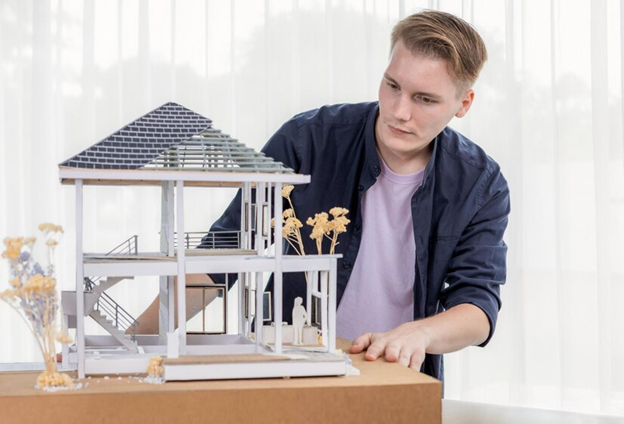
Building your dream home can be one of the most exciting and rewarding projects you can undertake. Getting the opportunity to plan out each step of the process and make the decisions about your building project is a big responsibility, and can be overwhelming for even the most experienced do-it-yourselfers. Taking the scope of the project into account before you get started can help make the process go a lot more smoothly.
Learn the proper ways to find the right location, design your home, acquire the correct permits, and break ground. In this guide, we’ll walk you through the essential steps to bring your dream home to life.
1. Decide Your Budget
The first step in building your first home is determining your budget. Consider all expenses, including land acquisition, construction costs, permits, and contingency funds. Be realistic about what you can afford and leave room for unexpected expenses. Consulting with a financial advisor or mortgage lender can help you establish a feasible budget for your project.
2. Find a Location
Selecting the right location for your home is vital. Consider factors such as proximity to schools, workplaces, amenities, and the community’s overall vibe. Research zoning regulations and environmental considerations in potential areas. Take your time exploring different neighborhoods to find the perfect spot that aligns with your lifestyle and future plans.
3. Design Your Home
Once you’ve secured a location, it’s time to design your dream home. Work with architects or home designers to create a floor plan that suits your needs and preferences. Consider factors such as the number of bedrooms and bathrooms, layout flow, architectural style, and energy efficiency. Don’t forget to incorporate elements that reflect your personal taste and lifestyle.
If you are seeking a truly unique home, hire a well-reputed custom home builder that can offer you unparalleled flexibility and personalization. A custom home builder can work closely with you to bring your vision to life, from initial design concepts to final construction.
4. Get the Necessary Permits
Before breaking ground, you’ll need to obtain the necessary permits from local authorities. This process may involve submitting your building plans for review and approval. Ensure compliance with building codes, zoning regulations, and environmental standards. Working with a knowledgeable contractor or builder can streamline the permit application process and ensure that your project meets all requirements.
5. Construction Process
With permits in hand, construction can begin. Hire a reputable contractor or builder with experience in residential construction. Stay involved in the process by regularly communicating with your construction team and monitoring progress. Be prepared for unexpected delays or challenges that may arise during construction and maintain open communication to address them promptly.
6. Start on the Interior
As the construction nears completion, it’s time to start thinking about the interior finishes and fixtures. Select flooring, countertops, cabinetry, paint colors, and lighting that complement your design aesthetic. Don’t overlook the importance of functional elements such as plumbing fixtures and HVAC systems. Work with interior designers, decorators, or other agencies involved in custom buildings to bring your vision to life and create a comfortable, stylish living space.




